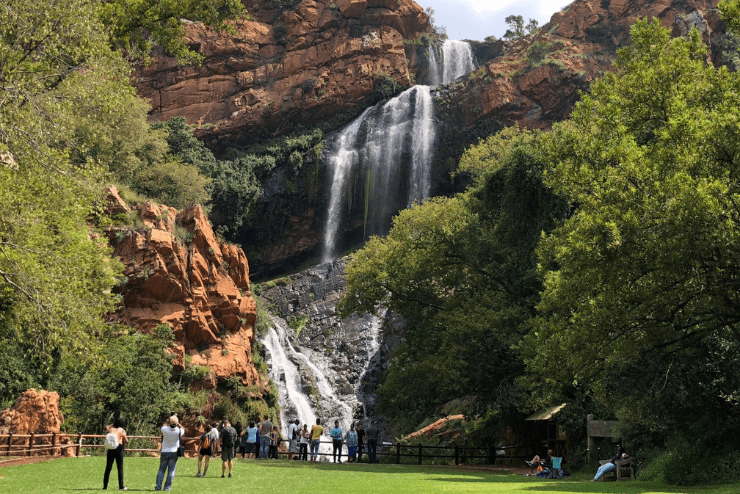The 8-Second Trick For Johannesburg North Attractions
The 8-Second Trick For Johannesburg North Attractions
Blog Article
Johannesburg North Attractions Can Be Fun For Anyone
Table of ContentsA Biased View of Johannesburg North AttractionsWhat Does Johannesburg North Attractions Do?Get This Report about Johannesburg North AttractionsThe Only Guide for Johannesburg North AttractionsSome Known Details About Johannesburg North Attractions 6 Simple Techniques For Johannesburg North Attractions
The city owes its location to the visibility of a a lot more precious source: gold. The city grew on the side of the Witwatersrand Main Coral reef, a below ground stratum of gold-bearing quartz-silica conglomerate that arcs for thousands of miles beneath the Highveld. Most of the gold mines in the city ceased procedure in the 1970s, yet in its day the Witwatersrand gold market represented greater than 40 percent of the globe's yearly gold production.Johannesburg has a pleasant environment. Summertime temperature levels average regarding 75 F (24 C); winter season temperatures average about 55 F (13 C) and only sometimes dip below freezing. The city takes pleasure in concerning eight hours of sunshine daily in both winter and summer. Rain standards regarding 28 inches (700 millimetres) per year, but the total differs substantially from year to year.
What rain the city receives drops virtually solely in the summertime, commonly in amazing late-afternoon electrical tornados. Air contamination positions a substantial trouble, especially in the cold weather, when thermal inversions impede the westward circulation of air from the Indian Ocean. Pollution is most extreme in the densely cleared up Black territories on the city's perimeter, where many residents still rely upon coal for fuel.

The Greatest Guide To Johannesburg North Attractions
The equilibrium of the city is occupied by whites. Accommodation differs in character and high quality.
Physical development, although somewhat limited by transportation, continued promptly as migration to South Africa, and Johannesburg specifically, increased considerably. This issue was resolved in the 1930s when the vehicle was introduced in mass manufacturing to South Africa. Vehicles were, generally, restricted to the rich, and allowed them to relocate to the north of the city and commute into the centre.
Many bad suburban areas were mixed, with poor blacks and whites living with each other, although the well-off residential areas were usually scheduled for whites. This altered with the political election of the National Event in the 1948 political useful content elections, that began to formalise the system called discrimination. Discrimination formally marked which residential areas each race could reside in under the Group Areas Act.
The previous system of eleven numbered areas was reorganised in 2006. Marshalltown, as seen from the top of the Carlton Centre. The M1 and M2 run behind the buildings, and the southern residential areas prolong past the freeway boundary. The central city of Johannesburg lies within the city's Region F. The number of individuals living in the internal city on an informal basis is unidentified, as lots of are illegal immigrants. The joblessness, education, and age accounts of the area are all unknown, due to the difficulty of obtaining dependable info concerning the area.
An Unbiased View of Johannesburg North Attractions
Yeoville and Bellevue have a mix of apartment or condo buildings and solitary residential devices on tiny whole lots. The area lies on a mountainous divide that runs from east to west. The most obvious geographic attribute is Observatory Ridge, which is named for the large observatory situated on it. The leisure spaces are no more used, because of safety issues.

Johannesburg Arena, a training ground for both the Golden Lions and Orlando Pirates, is i loved this nearby. The eastern suburbs of Johannesburg lie in the city's 7th [] and 9th [] areas. The location is additionally functionally integrated with East Rand border towns beyond the official border of Johannesburg, such as Bedfordview and Edenvale (both component of Ekurhuleni Metropolitan Municipality).
Facts About Johannesburg North Attractions Revealed
R. Tambo International Airport Terminal). The eastern suburbs are several of the oldest locations of Johannesburg, there are big communities of Jewish and other European backgrounds, the bulk of the populace is English talking. There are three golf training courses in addition to a variety of protected ridges with viewsites. There are a number of strong and up-market enjoyment and shopping locations in the east such as the Eastgate Mall and the Greenstone mall.
Originally developed to house male migrant workers, several have been improved as dwellings for pairs and family members. The suburban area was not historically enabled to develop work centres within the area, so virtually all of its homeowners are travelers to other components of the city.
The Single Strategy To Use For Johannesburg North Attractions
The household locations in the northern suburbs are primarily official, with no significant areas of informal housing, or real estate that does not have a permanent structure. This is a well-known location, there is a fad of land usage change from property to commercial, especially along primary arterial roadways and around well established nodes.
The area is well attached to road networks, especially along the north-south axis developed by the M1 and N1. Roads to the eastern and west are much less well developed, as there are no freeways taking a trip because instructions. Towards the north boundary of the city, the thickness of advancement lowers, leaving big areas of primitive land around Midrand.
The Johannesburg North Attractions Diaries
, which is located on a hillside overlooking the inner check here city and Hillbrow.
Report this page